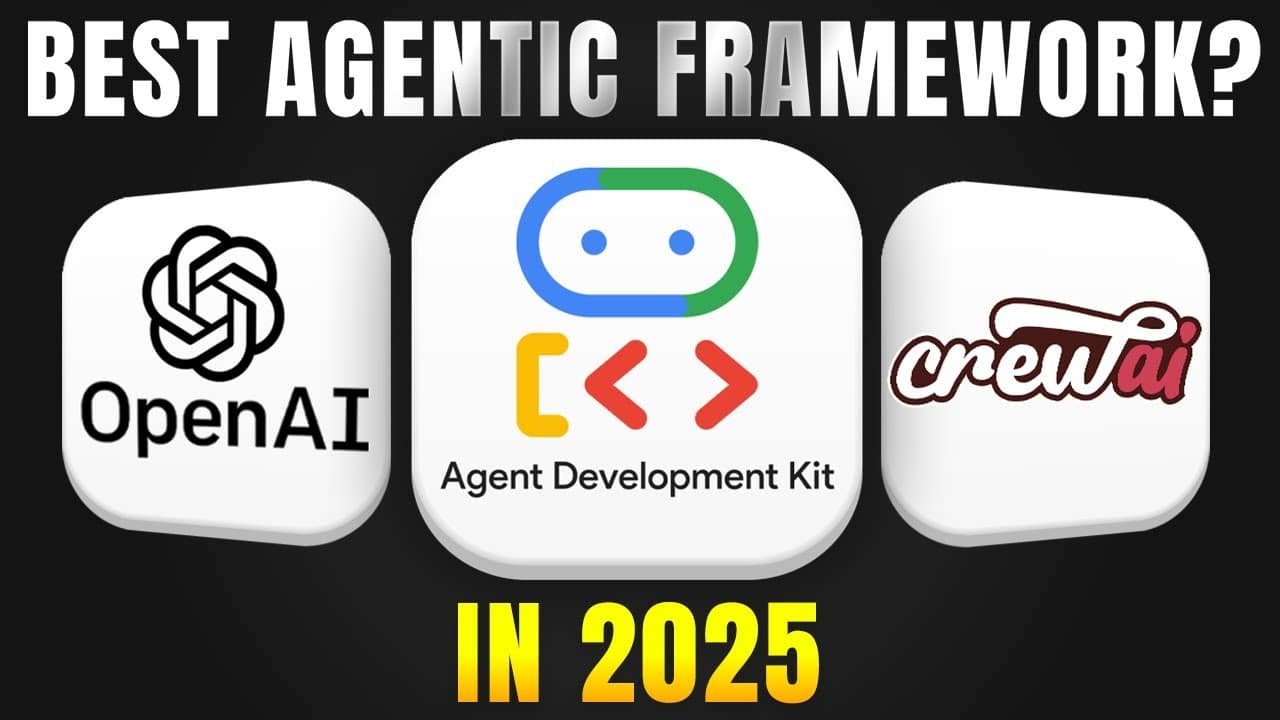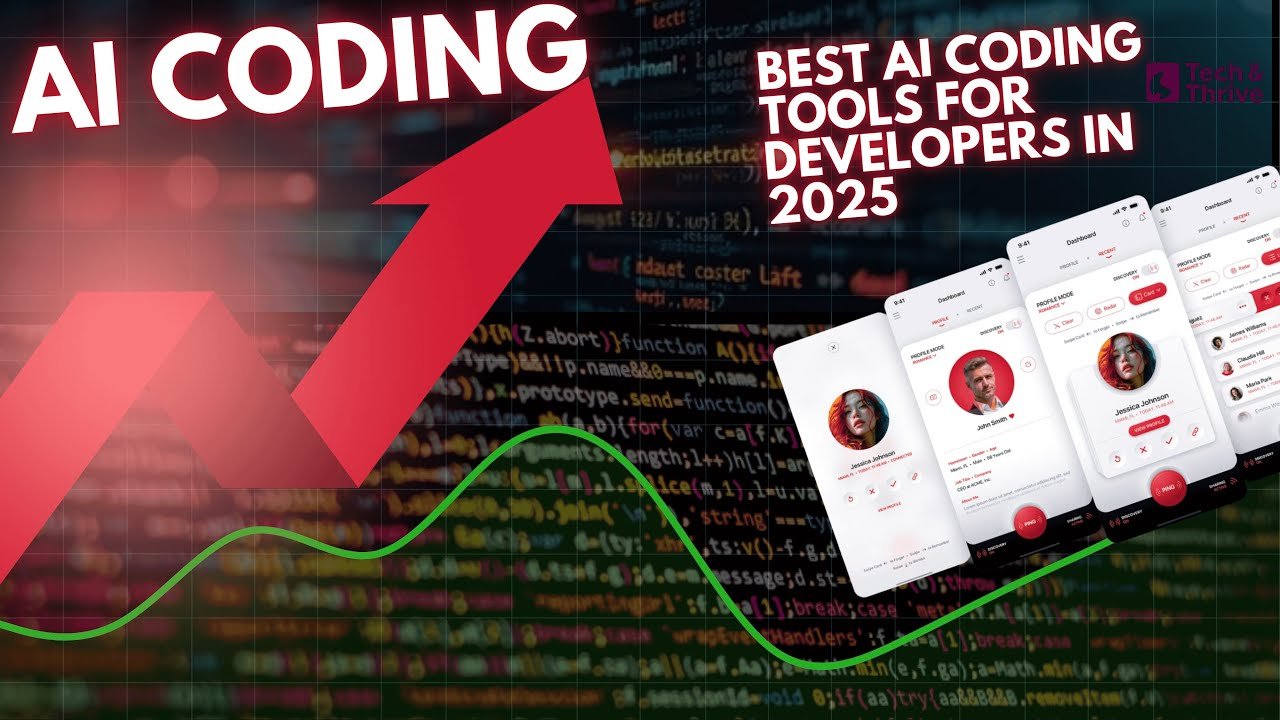How To Cautiously Use AI For Work : A Comprehensive Guide for IT Professionals
A strategic approach to implementing artificial intelligence in enterprise IT environments

Introduction: The Promise and Peril of AI in IT
Artificial intelligence has firmly established itself as a transformative force in the IT industry. From automating routine tasks to providing advanced analytics and decision support, AI tools promise unprecedented efficiency gains and competitive advantages. However, this technological revolution brings with it a host of challenges that demand careful consideration and strategic implementation.
As IT professionals, we find ourselves at the intersection of technological innovation and practical application. The allure of AI’s capabilities is undeniable—intelligent automation, predictive analytics, enhanced cybersecurity, and personalized user experiences are just a few of the benefits that modern AI systems offer. Yet beneath this promise lies a complex web of considerations ranging from data privacy and security to ethical implications and workforce adaptation.
In my years working with enterprise IT departments implementing AI solutions, I’ve witnessed firsthand both the remarkable successes and sobering failures. The difference between these outcomes rarely hinges on the sophistication of the AI technology itself, but rather on the approach to implementation. Organizations that rush headlong into AI adoption without proper frameworks, governance, and training invariably encounter obstacles that could have been avoided with more cautious planning.
This comprehensive guide aims to navigate the multifaceted landscape of AI implementation in the workplace, with a specific focus on the unique challenges and opportunities facing IT departments. Drawing from real-world case studies, established best practices, and emerging governance frameworks, we will explore how to harness the power of AI while mitigating its risks. Our goal is not to discourage AI adoption but rather to provide a roadmap for responsible implementation that aligns with organizational goals, regulatory requirements, and ethical standards.
You can connect with me in linkedin
Key Takeaways
- Understand the full spectrum of risks and benefits associated with AI implementation in IT environments
- Learn practical strategies for addressing data privacy and security concerns
- Discover proven frameworks for establishing AI governance within your organization
- Explore methods for training employees to use AI tools responsibly and effectively
- Gain insights from real-world case studies of successful AI implementation
Understanding the Risks and Challenges of AI Implementation
Before diving into AI implementation, it’s crucial to have a clear understanding of the potential pitfalls and challenges that organizations commonly face. In my experience consulting with IT departments across various industries, I’ve observed several recurring themes that warrant careful consideration.
Technical Challenges
AI systems are not plug-and-play solutions that can be seamlessly integrated into existing infrastructure. They require significant technical expertise, computational resources, and often substantial architectural changes to deploy effectively. Some of the primary technical challenges include:
- Integration with legacy systems: Many organizations struggle to integrate AI tools with their existing technology stack, particularly older systems that weren’t designed with AI interoperability in mind.
- Data quality and availability: AI models are only as good as the data they’re trained on. Insufficient, poor-quality, or biased data can lead to ineffective or problematic AI outputs.
- Scalability concerns: Solutions that work well in pilot programs may face significant challenges when scaled across an enterprise.
- Performance monitoring: Establishing effective mechanisms for monitoring AI system performance and detecting potential issues before they impact operations.
Organizational Challenges
Beyond technical considerations, organizations face numerous organizational challenges when implementing AI:
- Skill gaps: Many IT departments lack the specialized skills needed for AI implementation and maintenance, leading to dependency on external vendors or consultants.
- Change management: Resistance to new AI technologies can impede adoption, particularly when employees fear job displacement or significant changes to established workflows.
- Unclear objectives: Organizations often implement AI without clearly defined goals or metrics for success, making it difficult to evaluate ROI or justify continued investment.
- Governance issues: The absence of clear ownership, accountability structures, and decision-making processes can lead to fragmented AI initiatives and duplicated efforts.
Regulatory and Compliance Challenges
The regulatory landscape surrounding AI is rapidly evolving, creating additional layers of complexity for IT departments:
- Data protection regulations: Compliance with GDPR, CCPA, and other data protection regulations adds significant complexity to AI implementations that process personal data.
- Industry-specific regulations: Certain industries like healthcare, finance, and insurance face additional regulatory requirements that impact how AI can be deployed.
- Transparency requirements: Emerging regulations increasingly require organizations to provide explanations for AI-driven decisions, particularly those affecting individuals.
- Cross-border considerations: Organizations operating across multiple jurisdictions must navigate varying regulatory requirements, potentially necessitating different AI approaches in different regions.
Common Implementation Pitfalls
In my experience working with IT departments implementing AI, these are the most frequent missteps:
- Pursuing AI implementation as a technology project rather than a business transformation initiative
- Underestimating the data preparation and quality requirements
- Failing to involve all stakeholders, particularly end-users, in the implementation process
- Neglecting to establish clear metrics for measuring success and ROI
- Inadequate planning for ongoing maintenance, monitoring, and improvement of AI systems
Data Privacy and Security Concerns
Perhaps no aspect of AI implementation raises more concerns than data privacy and security. As AI systems typically require large volumes of data for training and operation, they inherently increase an organization’s data footprint and potential attack surface.
The Data Privacy Challenge
AI systems often require access to sensitive data to function effectively. This creates several specific privacy concerns:
- Data minimization conflicts: While privacy principles emphasize data minimization, AI models typically perform better with more data, creating an inherent tension.
- Purpose limitation challenges: Using data for AI training may constitute a new purpose that wasn’t specified when the data was originally collected, potentially violating privacy regulations.
- Unintentional data exposure: AI systems may inadvertently memorize sensitive information from training data and subsequently reveal it in responses or outputs.
- Third-party AI services: Using external AI services often involves sharing data with third parties, raising additional privacy and compliance concerns.
A particularly concerning scenario I encountered involved an IT department that deployed an AI-powered chatbot for internal support. The chatbot was trained on internal documentation that included sensitive information about network configurations and security protocols. When employees asked certain questions, the chatbot sometimes revealed confidential security details that should have been restricted. This incident highlighted the importance of carefully vetting training data and implementing proper access controls within AI systems.
Security Vulnerabilities in AI Systems
AI systems introduce new security vulnerabilities that IT departments must address:
- Model poisoning attacks: Malicious actors may attempt to corrupt AI training data to introduce backdoors or biases.
- Adversarial attacks: Specially crafted inputs designed to fool AI systems into making errors or revealing sensitive information.
- Model theft: Proprietary AI models may be targeted for theft through techniques like model extraction attacks.
- Infrastructure vulnerabilities: The complex infrastructure supporting AI systems creates additional attack vectors.
Best Practices for Securing AI Implementations
Based on my experience implementing AI across various IT environments, these practices significantly reduce privacy and security risks:
- Privacy by design: Incorporate privacy considerations from the earliest stages of AI system design, not as an afterthought.
- Data anonymization and pseudonymization: Use techniques like differential privacy to protect individual identities while maintaining data utility.
- Access controls and authentication: Implement robust mechanisms to ensure only authorized users can access AI systems and their underlying data.
- Encryption: Encrypt sensitive data both in transit and at rest, including AI model parameters and training data.
- Regular security assessments: Conduct penetration testing and security reviews specifically focused on AI components.
- Monitoring and logging: Implement comprehensive logging of AI system interactions and regular monitoring for unusual patterns.
- Data minimization strategies: Only collect and retain the data necessary for the AI system to function effectively.

AI Governance Frameworks and Ethical Considerations
Establishing robust governance frameworks is essential for responsible AI implementation. These frameworks provide the structure and guidelines necessary to ensure that AI systems are deployed in alignment with organizational values, regulatory requirements, and ethical principles.
Components of Effective AI Governance
Through my work implementing AI governance structures in several large IT departments, I’ve found that effective frameworks typically include these key components:
- Clear roles and responsibilities: Designating specific individuals or teams responsible for different aspects of AI oversight, from data stewardship to ethical review.
- Decision-making processes: Established procedures for evaluating and approving new AI use cases, with appropriate escalation paths for higher-risk applications.
- Risk assessment methodologies: Structured approaches to evaluating potential risks associated with specific AI implementations.
- Monitoring and audit mechanisms: Regular review processes to ensure ongoing compliance with policies and performance standards.
- Documentation requirements: Clear standards for documenting AI system designs, training data sources, and decision-making processes.
- Ethical guidelines: Clearly articulated principles governing how AI will and won’t be used within the organization.
Implementing NIST’s AI Risk Management Framework
The National Institute of Standards and Technology (NIST) has developed a comprehensive AI Risk Management Framework that provides a valuable foundation for governance efforts. I’ve helped several organizations adapt this framework to their specific needs, focusing on:
- Governance: Establishing oversight structures and policies for AI systems.
- Mapping: Identifying and documenting AI systems, their objectives, and risk profiles.
- Measuring: Developing metrics and assessment methods for evaluating AI performance and impacts.
- Managing: Implementing processes for ongoing risk mitigation and management.
Ethical Considerations in AI Implementation
Beyond compliance and risk management, ethical considerations should be central to AI governance. Key ethical dimensions include:
- Fairness and non-discrimination: Ensuring AI systems don’t perpetuate or amplify biases against protected groups.
- Transparency and explainability: Making AI decision-making processes understandable to affected stakeholders.
- Human oversight and intervention: Maintaining appropriate human supervision and the ability to override AI decisions when necessary.
- Environmental impact: Considering the energy consumption and carbon footprint of AI systems, particularly large models.
- Labor impacts: Addressing how AI implementation affects jobs and work processes within the organization.
Case Study: Implementing an AI Ethics Committee
At a mid-sized healthcare IT provider, I helped establish an AI Ethics Committee that reviewed all proposed AI implementations before approval. The committee included representatives from IT, legal, compliance, clinical staff, and patient advocacy. Their review process included a standardized ethics assessment covering potential biases, transparency, data use, and patient impact.
This committee prevented several problematic implementations, including an AI triage system that would have inadvertently discriminated against elderly patients. The committee identified that the training data underrepresented certain age groups, which would have led to potentially harmful outcomes. By catching this issue before deployment, the organization avoided both patient harm and potential regulatory consequences.
Training Employees on Responsible AI Use
Even the most sophisticated AI governance frameworks will fail without proper employee training and awareness. As AI tools become increasingly accessible and user-friendly, more employees across the organization are able to utilize them—often without full understanding of the associated risks and responsibilities.
Developing Comprehensive AI Training Programs
Based on my experience developing and delivering AI training programs for IT departments, effective training should include:
- Role-specific training: Different employee groups require different training based on their interaction with AI systems—developers need technical ethics training, while end-users need practical guidance on appropriate use.
- Hands-on scenarios: Abstract principles are difficult to apply; scenario-based training helps employees understand how to handle specific situations they might encounter.
- Regular refreshers: As AI capabilities and risks evolve rapidly, annual refresher training helps keep employees up-to-date.
- Assessment and feedback: Testing comprehension and collecting feedback helps refine training programs over time.
Core Training Components
Regardless of role, all employees working with AI should receive training on:
- Basic AI literacy: Understanding what AI is, its capabilities, and its limitations.
- Data sensitivity awareness: Recognizing sensitive data types and understanding their protection requirements.
- Bias recognition: Identifying potential biases in AI systems and their outputs.
- Responsible use guidelines: Clear instructions on appropriate and inappropriate uses of AI tools.
- Escalation procedures: Processes for reporting concerns or unexpected AI behaviors.
- Verification practices: Methods for validating AI outputs before acting on them.
One particularly effective approach I’ve implemented is the “AI Peer Review” system, where employees are trained to conduct structured reviews of each other’s AI-generated content before it’s used in critical applications. This approach has proven especially valuable for detecting subtle biases or inaccuracies that individuals might miss in their own work.
Creating an AI-Aware Culture
Beyond formal training, organizations should foster a culture of responsible AI use through:
- Executive sponsorship: Leadership demonstrating commitment to responsible AI practices.
- Open communication channels: Creating safe spaces for employees to discuss AI concerns.
- Recognition programs: Acknowledging employees who identify potential AI issues or suggest improvements.
- Communities of practice: Establishing cross-functional groups to share knowledge and best practices around AI use.
Training Resources for IT Departments
In my experience, these resources have proven particularly valuable for training IT staff on responsible AI use:
- IEEE’s Ethics Certification Program for Autonomous and Intelligent Systems (ECPAIS)
- The AI Ethics Guidelines Global Inventory maintained by Algorithm Watch
- NIST’s AI Risk Management Framework educational materials
- The Elements of AI free online course developed by Reaktor and the University of Helsinki
- Role-specific training modules from the Association for Computing Machinery (ACM)

Ensuring AI Accuracy in Business Applications
The value of AI in business applications is directly proportional to its accuracy and reliability. Inaccurate AI outputs can lead to poor decision-making, damaged customer relationships, and in some cases, significant financial or reputational harm.
Understanding AI Accuracy Challenges
Through my work implementing AI solutions across various IT departments, I’ve encountered several recurring accuracy challenges:
- Data drift: AI models trained on historical data gradually lose accuracy as real-world conditions change.
- Edge cases: Situations that occur rarely in training data but may be critical in real-world applications.
- Overconfidence: AI systems providing high-confidence outputs even when facing unfamiliar inputs.
- Context limitations: AI failing to understand broader context that would be obvious to human decision-makers.
- Integration errors: Inaccuracies arising from how AI systems interface with other business systems.
Strategies for Improving and Maintaining AI Accuracy
Based on my experience, these strategies significantly enhance AI accuracy in business settings:
- Robust validation processes: Implementing rigorous testing protocols before deployment, including adversarial testing designed to identify potential failure modes.
- Continuous monitoring: Establishing automated systems to track AI performance metrics and detect accuracy degradation over time.
- Human-in-the-loop approaches: Designing systems where humans review and can override AI decisions, particularly for high-stakes applications.
- Regular retraining: Scheduling periodic model retraining with updated data to address data drift and evolving conditions.
- Ensemble methods: Using multiple AI models in combination to improve overall accuracy and resilience.
- Uncertainty quantification: Having AI systems express confidence levels in their outputs to help users appropriately calibrate their trust.
- Feedback loops: Capturing user feedback on AI outputs to identify patterns of inaccuracy and guide improvements.
Verification Best Practices
For critical AI applications, I recommend these verification practices:
- Multiple data sources: Cross-checking AI outputs against alternative data sources when possible.
- Statistical quality control: Applying established quality control methods to monitor AI output variance and trends.
- Regular audits: Conducting periodic deep-dive evaluations of AI system accuracy across various scenarios.
- Transparent documentation: Maintaining clear records of model performance characteristics and known limitations.
Case Studies of Successful Cautious AI Implementation
Learning from real-world examples provides valuable insights into effective AI implementation strategies. The following case studies highlight organizations that have successfully navigated the challenges of AI adoption through cautious, thoughtful approaches.
Case Study 1: Healthcare Provider’s AI-Powered Diagnostic Support
A regional healthcare provider wanted to implement AI to help radiologists identify potential abnormalities in medical images. Rather than rushing to deploy a comprehensive solution, they took a phased approach:
- Phase 1: Shadow Mode – They began by running the AI system in parallel with normal workflows, allowing radiologists to compare AI findings with their own diagnoses without influencing clinical decisions.
- Phase 2: Advisory Mode – After six months of refinement, the AI was integrated as an advisory tool, highlighting areas of interest for radiologists to examine but not making independent diagnoses.
- Phase 3: Collaborative Mode – Once performance metrics consistently demonstrated value, the system was deployed as a collaborative tool, with clear protocols for when human judgment would override AI suggestions.
Key success factors included:
- Establishing clear performance metrics before deployment
- Involving end-users (radiologists) throughout the development process
- Maintaining transparency about the system’s capabilities and limitations
- Creating a governance committee with representation from clinical, technical, and legal teams
Case Study 2: Financial Institution’s Fraud Detection System
A mid-sized financial institution implemented an AI-powered fraud detection system using these cautious practices:
- Risk-tiered approach: They categorized transactions into risk tiers, applying AI detection only to medium-risk transactions initially, while maintaining human review for high-risk transactions.
- Explainability requirements: They required their AI vendor to provide clear explanations for all fraud flags, rejecting “black box” approaches.
- Customer feedback integration: They created streamlined processes for customers to contest AI-flagged transactions, using this feedback to continuously improve the system.
- Regular bias audits: Quarterly reviews analyzed whether the system was disproportionately flagging transactions from specific demographic groups.
Results included a 37% reduction in fraud losses with only a 0.3% increase in false positives, demonstrating that cautious implementation didn’t compromise effectiveness.
Case Study 3: Retail IT Department’s Infrastructure Optimization
A retail company’s IT department implemented AI for infrastructure management and optimization while addressing potential risks:
- Governance first: Before selecting technology, they established a formal AI governance framework defining acceptable use cases, required approvals, and monitoring responsibilities.
- Limited initial scope: They began with non-critical systems like development environments before expanding to production systems.
- Human verification periods: They implemented mandatory periods where human operators verified AI-recommended infrastructure changes before allowing automated implementation.
- Progressive autonomy: As confidence in the system grew, they gradually expanded its autonomy while maintaining emergency override capabilities.
This approach resulted in 22% infrastructure cost reduction while maintaining higher availability than before the AI implementation.
Common Success Factors Across Case Studies
Analyzing numerous successful AI implementations, I’ve identified these recurring success factors:
- Starting with clearly defined, limited-scope use cases
- Establishing governance frameworks before technical implementation
- Involving end-users throughout the development and deployment process
- Implementing phased approaches with progressive expansion of AI capabilities
- Maintaining clear human oversight and intervention capabilities
- Creating feedback mechanisms to continuously improve AI performance
- Conducting regular audits and evaluations of system performance
Addressing AI Bias in Workplace Technology
AI bias represents one of the most significant challenges in workplace AI implementation. When AI systems reflect or amplify existing biases, they can lead to unfair treatment, discrimination, and potential legal liability.
Understanding the Sources of AI Bias
Based on my experience auditing AI systems for bias, these are the most common sources:
- Training data bias: When historical data contains existing patterns of discrimination or underrepresentation of certain groups.
- Selection bias: When the data collection process itself excludes or undersamples certain populations.
- Label bias: When the labels or categories used in supervised learning reflect subjective human judgments that may contain biases.
- Algorithmic bias: When the algorithms themselves inadvertently favor certain outcomes based on their design.
- Deployment bias: When systems are deployed in contexts different from those they were designed for, leading to unexpected biases.
Strategies for Detecting and Mitigating Bias
Through my work helping organizations address AI bias, I’ve developed these effective strategies:
- Diverse development teams: Ensuring diverse perspectives in AI development teams helps identify potential biases earlier.
- Representative data collection: Implementing strategies to ensure training data appropriately represents all relevant populations.
- Bias audits: Conducting regular, structured audits to detect potential biases across different demographic groups.
- Fairness metrics: Implementing specific metrics to measure fairness across different dimensions.
- Algorithmic debiasing: Applying technical approaches to reduce bias in models, such as adversarial debiasing or fair representation learning.
- Documentation and transparency: Maintaining clear records of data sources, preprocessing steps, and model training decisions.
Real-World Impact of AI Bias in the Workplace
To illustrate the importance of addressing bias, consider these examples I’ve encountered:
- Resume screening bias: An AI resume screening tool inadvertently penalized candidates from certain universities due to historical hiring patterns, perpetuating existing representation gaps.
- Performance evaluation bias: An AI system analyzing employee performance data began reflecting existing gender biases in performance ratings, affecting promotion recommendations.
- Customer service allocation bias: An AI routing system for customer service requests consistently assigned more complex cases to certain demographic groups based on biased historical data.
In each case, identifying and addressing these biases required combining technical approaches (retraining models, adjusting algorithms) with organizational changes (revised data collection, modified review processes).
Warning Signs of Potential AI Bias
Based on my experience, watch for these indicators of potential bias in your AI systems:
- Significantly different outcomes or recommendations for different demographic groups
- Clustering of errors or inaccuracies within specific populations
- Unexpected correlations between sensitive attributes and AI decisions
- User feedback indicating perceived unfairness from specific groups
- AI recommendations that reinforce existing patterns rather than identifying new opportunities
Measuring ROI of AI Implementations
Demonstrating the return on investment for AI initiatives is crucial for sustaining organizational support and securing resources for future projects. Yet measuring AI ROI presents unique challenges that require thoughtful approaches.
Establishing Appropriate Metrics
Based on my experience helping IT departments evaluate AI investments, effective measurement frameworks should include:
- Direct financial metrics: Cost reductions, revenue increases, and productivity improvements directly attributable to AI implementation.
- Operational metrics: Improvements in speed, accuracy, uptime, or other operational KPIs.
- Risk reduction metrics: Measurable decreases in security incidents, compliance violations, or other risk events.
- Employee impact metrics: Changes in employee satisfaction, retention, or time allocation to higher-value tasks.
- Innovation metrics: New capabilities or offerings enabled by AI implementation.
- Customer experience metrics: Improvements in customer satisfaction, engagement, or retention.
ROI Measurement Challenges
Organizations often encounter these challenges when attempting to measure AI ROI:
- Attribution difficulties: Isolating the specific impact of AI from other concurrent initiatives or market changes.
- Time lag effects: Many AI benefits materialize gradually over time rather than immediately after implementation.
- Indirect benefits: Significant AI value often comes from difficult-to-quantify benefits like improved decision quality.
- Opportunity cost considerations: Evaluating what would have happened without the AI implementation.
- Total cost calculation: Accurately capturing all costs, including maintenance, training, and infrastructure.
Practical ROI Measurement Approaches
These practical approaches have proven effective in my experience:
- Baseline establishment: Thoroughly document pre-implementation metrics to enable accurate before-and-after comparisons.
- Controlled experimentation: When possible, implement AI in some areas while maintaining control groups to enable direct comparison.
- Phased evaluation: Establish measurement checkpoints at 30, 90, 180, and 365 days to track evolving impact.
- Multi-dimensional assessment: Evaluate both quantitative metrics and qualitative feedback from stakeholders.
- ROI forecasting: Develop models that project long-term returns based on early indicators.
One particularly effective approach I’ve implemented is the “value stream mapping” method, which traces specific AI capabilities through business processes to identify where and how they generate value. This approach helps connect technical improvements to business outcomes in a way that resonates with executive stakeholders.
Case Study: ROI Measurement Framework
For a manufacturing client implementing AI-powered predictive maintenance, we developed a comprehensive ROI framework that measured:
- Direct cost savings: Reduced parts costs and maintenance labor hours
- Productivity improvements: Increased equipment uptime and production throughput
- Risk reduction: Fewer safety incidents and emergency repairs
- Quality improvements: Reduction in defects attributable to equipment issues
- Staff reallocation value: Value generated by maintenance staff shifting to preventative work
This comprehensive approach demonstrated a 311% ROI over three years, far exceeding initial projections and securing funding for expanded implementation.
Conclusion: A Balanced Approach to AI Implementation
Throughout this guide, we’ve explored the multifaceted landscape of AI implementation in the workplace, focusing specifically on the unique challenges and opportunities facing IT departments. The path to successful AI adoption is neither reckless embracing of every new capability nor excessive caution that prevents innovation. Rather, it lies in a balanced, thoughtful approach that maximizes benefits while systematically addressing risks.
The organizations that achieve the greatest success with AI are those that view it not as a purely technical initiative but as a socio-technical system that requires alignment between technology, people, processes, and governance. They recognize that responsible AI implementation is not just about compliance or risk mitigation—it’s about creating sustainable value that benefits the organization and its stakeholders.
Key Principles for Cautious AI Implementation
Based on my experience helping dozens of organizations navigate AI adoption, these principles consistently lead to better outcomes:
- Start with governance: Establish frameworks, policies, and oversight mechanisms before technical implementation.
- Embrace transparency: Maintain clear documentation and communication about AI capabilities, limitations, and decision processes.
- Prioritize education: Invest in comprehensive training for all stakeholders interacting with AI systems.
- Implement gradually: Use phased approaches that begin with limited scope and progressively expand as confidence grows.
- Maintain human oversight: Ensure appropriate human supervision and intervention capabilities for all AI systems.
- Regularly evaluate: Conduct ongoing assessments of AI performance, impact, and alignment with organizational values.
- Foster inclusive development: Involve diverse perspectives in AI system design, testing, and deployment.
- Balance innovation and caution: Create frameworks that encourage experimentation while managing risks appropriately.
Looking Forward: The Evolving Landscape of Workplace AI
As AI capabilities continue to advance at a remarkable pace, the framework for cautious implementation must evolve as well. Organizations should stay informed about emerging best practices, regulatory developments, and technical safeguards. They should also contribute to the broader conversation about responsible AI by sharing lessons learned and engaging with industry initiatives focused on ethical AI development.
The future of AI in the workplace will be shaped not just by technological advancement but by our collective approach to implementation. By prioritizing responsible practices and thoughtful governance, IT departments can harness AI’s transformative potential while mitigating its risks, ultimately creating sustainable value for their organizations and stakeholders.
Final Recommendations for IT Leaders
As you navigate your organization’s AI journey, consider these practical next steps:
- Conduct an inventory of existing AI systems and use cases across your organization
- Establish or enhance your AI governance framework based on established standards like the NIST AI RMF
- Develop a comprehensive AI training program for technical and non-technical staff
- Implement structured processes for evaluating AI vendors and solutions
- Create clear documentation standards for AI systems and their decision-making processes
- Establish cross-functional teams to address ethical considerations and bias concerns
- Develop comprehensive ROI measurement frameworks for AI initiatives
Looking to start a remote career in artificial intelligence? Here’s how to find remote AI jobs on Appen—a trusted platform offering flexible opportunities in AI training and data labeling.










